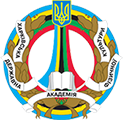- Головна сторінка
- →
- Періодичні видання
- →
- Слобожанський науково-спортивний вісник
- →
- Перегляд матеріалів
JavaScript is disabled for your browser. Some features of this site may not work without it.
Показати скорочений опис матеріалу
| dc.contributor.author | Sivaraman, Chitra | |
| dc.contributor.author | Chelliah Jesus Rajkumar, Navaraj | |
| dc.contributor.author | Sanjaykumar, Swamynathan | |
| dc.contributor.author | Kalmykova, Yuliya | |
| dc.contributor.author | Pomeshchikova, Irina | |
| dc.contributor.author | Lebediev, Serhii | |
| dc.date.accessioned | 2024-09-28T11:23:42Z | |
| dc.date.available | 2024-09-28T11:23:42Z | |
| dc.date.issued | 2024-09-26 | |
| dc.identifier.citation | Chitra Sivaraman, Navaraj Chelliah Jesus Rajkumar, Swamynathan Sanjaykumar, Yuliya Kalmykova, Irina Pomeshchikova, & Serhii Lebediev. (2024). Efficacy of Resistance Band Training on Shoulder Muscle Strength and Injury Prevention in Volleyball Athletes. Slobozhanskyi Herald of Science and Sport, 28(3), 116-121. https://doi.org/10.15391/snsv.2024-3.003 | uk |
| dc.identifier.issn | 1991-0177 | |
| dc.identifier.uri | http://repo.khdafk.com.ua/xmlui/handle/123456789/596 | |
| dc.description.abstract | Purpose: Shoulder injuries are common in women volleyball players, often resulting from repetitive overhead movements. Effective strength training methods can help prevent these injuries. This study aimed to investigate the efficacy of an eight-week resistance band training program on shoulder muscle strength enhancement and injury prevention in women volleyball athletes. Material and Methods. Forty collegiate women volleyball players, aged 18-25, were randomly assigned to either an intervention group (n=20) or a control group (n=20). The intervention group underwent a structured resistance band training program targeting shoulder strength, which included exercises like shoulder presses, lateral raises, internal and external rotations, and scapular retractions. Isokinetic dynamometry was used to assess shoulder muscle strength before and after the intervention, measuring peak torque of the shoulder flexors, extensors, internal rotators, and external rotators. Injury rates were monitored throughout the volleyball season, documenting the number and severity of shoulder injuries. Results. Significant improvements in shoulder muscle strength were observed in the intervention group across all measured parameters (p < 0.001), while the control group showed minimal changes (p > 0.05). Moreover, the intervention group exhibited a significant reduction in shoulder injury rates post-intervention (p = 0.041), whereas the control group's injury rates remained stable (p = 0.768). Conclusions. The findings suggest that resistance band training effectively enhances shoulder muscle strength and reduces injury rates in women volleyball athletes. Integrating targeted strength training, such as resistance band exercises, into regular training routines may help enhance athlete performance and mitigate injury risk in sports characterized by repetitive overhead movements. Further research is needed to explore the long-term effects and optimal implementation strategies of resistance band training in athletic contexts. | uk |
| dc.language.iso | en | uk |
| dc.publisher | Слобожанський науково-спортивний вісник | uk |
| dc.relation.ispartofseries | 28;3 | |
| dc.subject | resistance band training, volleyball athletes, shoulder strength, injury prevention, isokinetic dyna-mometry | uk |
| dc.title | Efficacy of Resistance Band Training on Shoulder Muscle Strength and Injury Prevention in Volleyball Athletes | uk |
| dc.type | Article | uk |
Долучені файли
Даний матеріал зустрічається у наступних розділах
-
Слобожанський науково-спортивний вісник
Журнал містить статті, що відображають матеріали сучасних наукових досліджень у галузі фізичної культури та спорту

